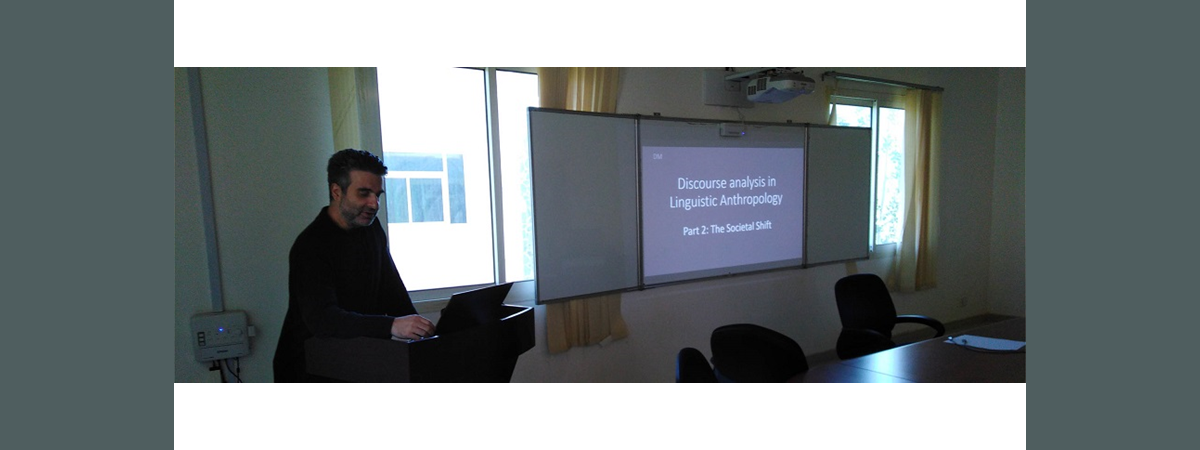
Discourse Analysis in Linguistic Anthropology (Part 2)
On October 16, 2019, Dr. Michael Hadzantonis delivered a seminar on 'Discourse Analysis in Linguistic Anthropology (Part 2)', organized by the Language Research Center at the Faculty of Languages and Translation.
Dr. Hadzantonis presented a comprehensive study of Erving Goffman's Frame theory. He mentioned, "Goffman proposed that conversations should be seen as complex instances, and that their context could shift based on their current 'frame'. This approach was initially inspired by anthropologist Gregory Bates' work on Frame theory." Goffman's innovative methodological framework differentiates the speaker into four roles: the producer, the mediator, the author, and the figure. Similarly, the hearer is also categorized into distinct roles, including the ratified audience, the unratified audience, eavesdroppers, and bystanders.
Dr. Hadzantonis further analyzed the transformative phase of rap music in the 1980s. He noted the transition from the Early New School rap to the Golden Age New School rap, where the 'figure'—the individual or subject referred to in the narrative—shifted from self-representation (the rapper) to societal issues such as drugs or violence. This substantial shift in the thematic focus of rap music and its societal implications underscored Goffman's continued relevance to contemporary society.
The seminar underscored the applicability of a straightforward analytical framework as a discourse analytical technique in Linguistic Anthropology. Dr. Hadzantonis highlighted how this framework could facilitate understanding the evolution of rap music's style over time.
With the participation of King Abdullah Road campus, the seminar successfully spurred meaningful discourse and added valuable insights into the field of Linguistic Anthropology.




